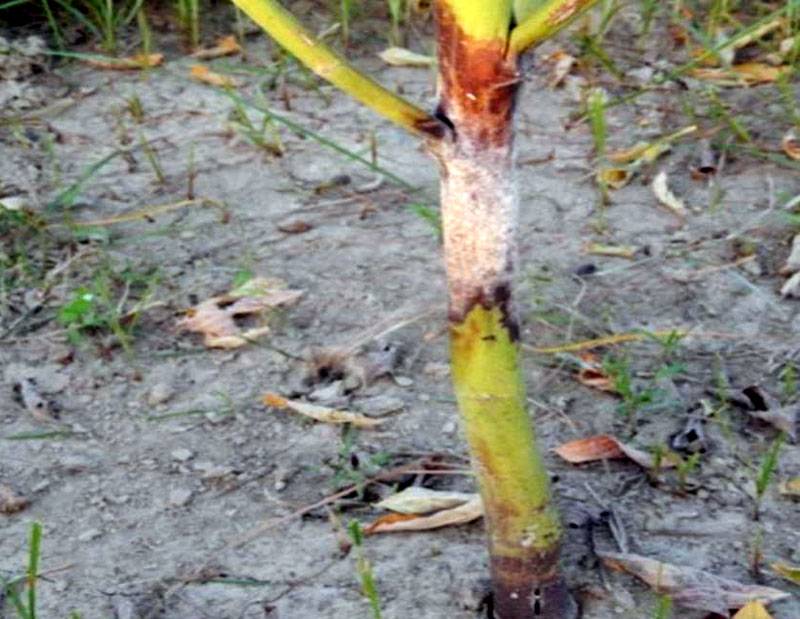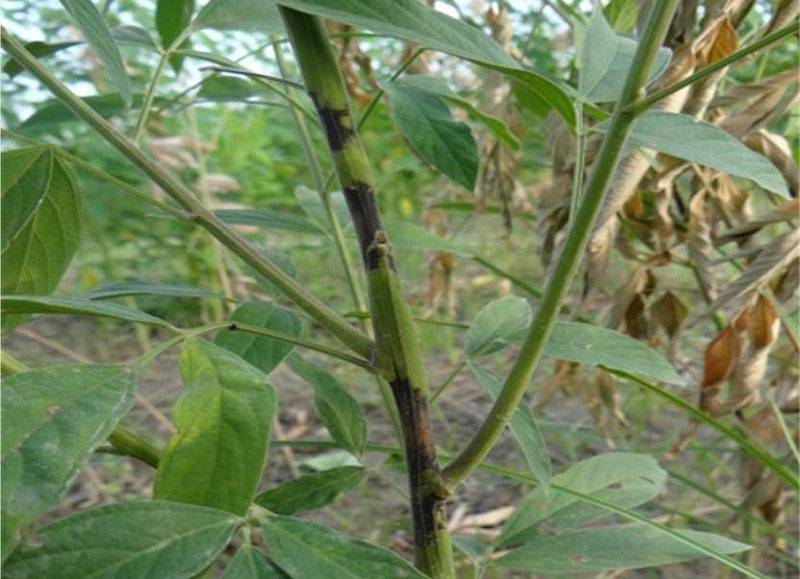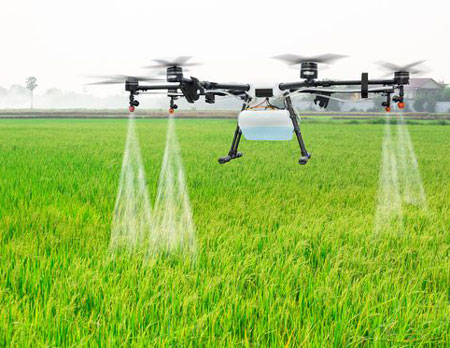Tur (Red Gram)
Phytopthora blight

Phytopthora drechsleri Tucker f. sp. cajani
Fungal Disease

Phytopthora drechsleri Tucker f. sp. cajani
Fungal Disease
Phytophthora blight, also known as stem rot of pigeonpea, is caused by the water mold Phytophthora drechsleri var. cajani. The disease is particularly damaging to young seedlings, leading to rapid death, and is exacerbated in soils with poor drainage.
Symptoms
- Seedling Infection: Seedlings are highly susceptible and may die within 3 days of infection, showing crown rot symptoms and wilting.
- Older Plants: Water-soaked lesions develop, eventually becoming necrotic.
- Stem and Leaf Blight: Brown to dark brown lesions form on the stem near the soil surface, which later spread to branches and petioles, causing brittleness. Advanced infections can cause cankerous swellings on stems.
- Leaf Symptoms: Circular lesions on leaves; severe cases can lead to complete defoliation.
Environmental Conditions
- Soil: The pathogen thrives in flooded or water-saturated soils, especially in heavy soils with poor drainage.
- Weather: Disease outbreaks are more common when the minimum temperature is between 21–25°C and there are 3–5 rainy days in the preceding week.
Management
Phytophthora blight is difficult to manage, but resistant varieties, proper soil drainage, and fungicide treatments like Metalaxyl can help reduce disease incidence. However, resistance to some fungal races and fungicide resistance are ongoing challenges.




